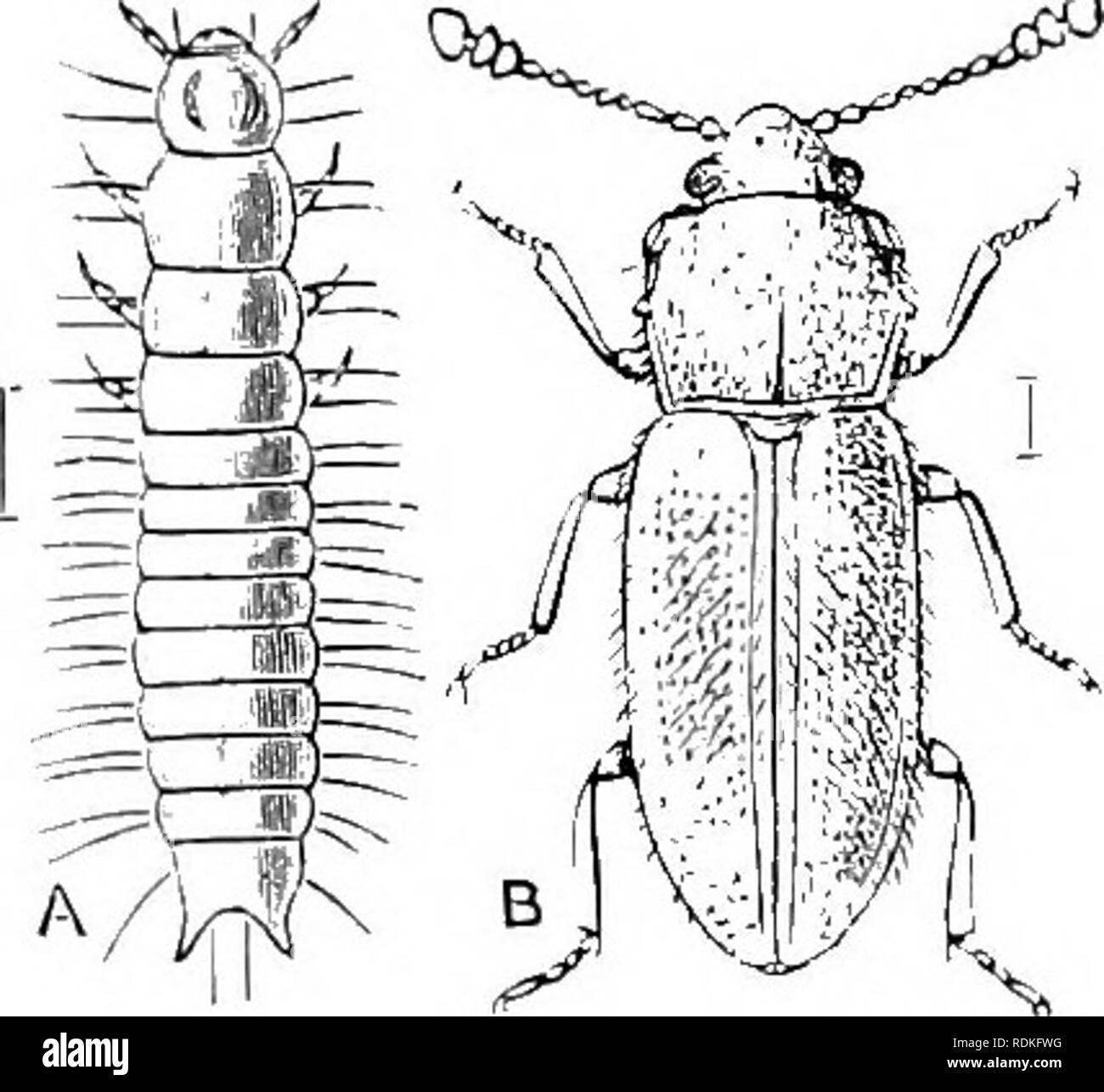. The Cambridge natural history. Zoology. POLVMORPHA CRYPTOPHAGIDAE HELOTIDAE !3S. Fam. 33. Cryptophagidae.—Front and middle coixic xmj. small and deeply embedded; antennae ivith enlarr/ed terminal joints; tarsi five-jointed, the posterior sometimes in the male only four- jointed; ahdomen with five visible rentrcd segments, eapable of movement, the first much longer than any of the others. A small family composed of obscure forms of minute size, which apparently have mould-eating habits, though very little is known on this point, and several of the genera {Antherophagus, Telmatophi- lus) are f

Image details
Contributor:
The Book Worm / Alamy Stock PhotoImage ID:
RDKFWGFile size:
7.1 MB (253.6 KB Compressed download)Releases:
Model - no | Property - noDo I need a release?Dimensions:
1647 x 1516 px | 27.9 x 25.7 cm | 11 x 10.1 inches | 150dpiMore information:
This image is a public domain image, which means either that copyright has expired in the image or the copyright holder has waived their copyright. Alamy charges you a fee for access to the high resolution copy of the image.
This image could have imperfections as it’s either historical or reportage.
. The Cambridge natural history. Zoology. POLVMORPHA CRYPTOPHAGIDAE HELOTIDAE !3S. Fam. 33. Cryptophagidae.—Front and middle coixic xmj. small and deeply embedded; antennae ivith enlarr/ed terminal joints; tarsi five-jointed, the posterior sometimes in the male only four- jointed; ahdomen with five visible rentrcd segments, eapable of movement, the first much longer than any of the others. A small family composed of obscure forms of minute size, which apparently have mould-eating habits, though very little is known on this point, and several of the genera {Antherophagus, Telmatophi- lus) are found chiefly on growing plants, especially in flowers. Although the imago of A ntheropihagus lives in flowers, yet the larva has only been found in the nests of bumble-bees; there is Fig. 116.—Oryptophagxis cUnta- reason for believing that the imago ^:4ftpe:tu^:cf ^' makes use of the bee to transport it from the flowers it haunts to the nests in which it is to breed; ^ this it does by catching hold of the bee with its mandibles when the bee visits the flower in which the beetle is concealed. It is strange the beetle should adopt such a mode of getting to its future home, for it has ample wings. "VYe must presume that its senses and instinct permit it to recognise the bee, but do not suffice to enable it to find the bee's nest. Some of the larvae of the genus Cryptophagus are found abundantly in the nests of various wasps, where they are probably useful as scavengers, others occur in the nests of social caterpillars, and they are sometimes common in loose straw; this being the habitat in which Perris found the one we figure. Fam. 34. Helotidae.—Front and middle coxed cavities round, with scarcely any angidar prolongation externcdly ; all the coxae widely se-parated; five visible ventrcd segments, cdl mobile. The Insects of this family are closely allied to Trogositidae and Xitidulidae, and have the tarsal structure of the former family; but the Helotidae are different